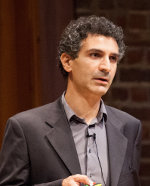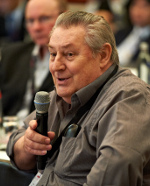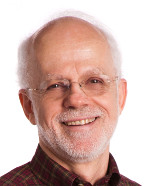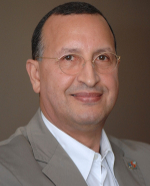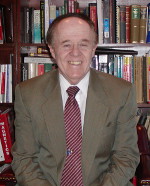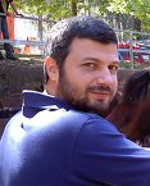IEEE IoT Newsletter - September 2015
Internet of Things and the 5th Generation Mobile Network
Roberto Minerva
The definition of the next generation of mobile networks is at a very preliminary stage and there is no consistent and shared view about its architecture and technical aspects. In this early stage it is important to define the goals and requirements of the future infrastructure. A very detailed set of requirements has been put forward from the perspective of telecom operators.
oneM2M: A Bridge over IoT Waters
Omar Elloumi
The development of Machine to Machine (M2M) communications and the Internet of Things (IoT) is continuing at pace. The two are intrinsically linked and depending on your definition, M2M is basically becoming acknowledged as the communications layer of the IoT. The amount of investment into this sector is reaching astonishing proportions. According to a recent announcement by IDC, the internet of things market will grow globally from approximately 655.8 billion USD in 2014 to 1.7 trillion USD in 2020. McKinsey recently predicted that the total economic impact of the IoT could be as much as 11.1 trillion USD per year by 2025.
IoT is More Than Just Connecting Devices: The OpenIoT Stack Explained
Martin Serrano and John Soldatos
The way the Internet of Things (IoT) has evolved technologically in the last years and the level of expected IoT services immersion have impacted daily aspects of people's lives. A clear example where IoT has influenced big changes is in the cities. Today there are cities technologically equipped and socially organized in a way that the generation and deployment of better citizen services and solutions are more rapidly adopted (e.g. Smart Cities).
Understanding IPv6's Potential for IoT: The IoT6 Research Project
Sébastien Ziegler, Peter Kirstein, Latif Ladid, Antonio Skarmeta and Antonio Jara
The conclusions presented in our previous article (The Case for IPv6 as an Enabler of the Internet of Things) were the result of a three-year project dubbed IoT6, supported by the European Commission. Though the main outcomes of the project are the recommendations on exploiting IPv6's features presented in our first article, we thought it useful and informative to provide context for how we arrived at those recommendations, discuss related findings and mention representative use cases.
This Month's Contributors
Roberto Minerva holds a PhD in Computer Science and Telecommunications from Telecom Sud Paris, France, and a Master Degree in Computer Science from Bari University, Italy.
Read More >>
Dr. Omar Elloumi is Head of M2M and Smart Grid standards within Alcatel-Lucent CTO.
Read More >>
Martin Serrano is an ICT expert with more than 12 years experience in industry and applied research, at the technical and management levels, within a wide range of Pan-European international collaborative research Projects and also with experience on large scale Integrated Platforms experimentation.
Read More >>
John Soldatos is with Athens Information Technology, where he is currently an Associate Professor. He has technically participated in a number of research projects, which were co-funded by the EU.
Read More >>
Sébastien Ziegler is the founder and Director of Mandat International, a foundation based in Geneva with special consultative status to the UN and a member of the International Telecommunication Union.
Read More >>
Peter Kirstein is Professor of Computer Communications Systems at University College London. He is a fellow of many professional bodies including the Royal Academy of Engineering, American Academy of Arts and Science, US National Academy of Engineering.
Read More >>
Latif Ladid holds the following positions: Founder & President, IPv6 FORUM; Founder & Chair, 5G World Alliance; Chair, ETSI IP6 ISG; Chair, IEEE ComSoc 5G MWI & IoT subTC; Emeritus Trustee, Internet Society; Board Member IPv6 Ready & Enabled Logos Program.
Read More >>
Antonio F. Skarmeta received the M.S. degree in Computer Science from the University of Granada and B.S. (Hons.) and Ph.D. degrees in Computer Science from the University of Murcia, Spain.
Read More >>
Antonio Jara has received two Master Sciences (Hons. – valedictorian) degrees: a Master in Business Administration – MBA (Hons), and PhD (Cum Laude). He is especially focused on the design and development of new protocols for security and mobility for the Internet of things, the topic of his Ph.D.
Read More >>
Contributions Welcomed
Click Here for Author's Guidelines >>
Would you like more information? Have any questions? Please contact:
Raffaele Giaffreda, Editor-in-Chief
raffaele.giaffreda@create-net.org
Stuart Sharrock, Managing Editor
stuartsharrock@ieee.org
About the IoT eNewsletter
The IEEE Internet of Things (IoT) eNewsletter is a bi-monthly online publication that features practical and timely technical information and forward-looking commentary on IoT developments and deployments around the world. Designed to bring clarity to global IoT-related activities and developments and foster greater understanding and collaboration between diverse stakeholders, the IEEE IoT eNewsletter provides a broad view by bringing together diverse experts, thought leaders, and decision-makers to exchange information and discuss IoT-related issues.
IEEE IoT Newsletter Editorial Board
Sign Up for IoT Technical Community Updates
Calendar of Events
IEEE 8th World Forum on Internet of Things (WF-IoT) 2022
26 October-11 November 2022
Call for Papers
IEEE Internet of Things Journal
Special issue on Towards Intelligence for Space-Air-Ground Integrated Internet of Things
Submission Deadline: 1 November 2022
Special issue on Smart Blockchain for IoT Trust, Security and Privacy
Submission Deadline: 15 November 2022
Past Issues
September 2022
July 2022
March 2022
January 2022
November 2021
September 2021
July 2021
May 2021
March 2021
January 2021
November 2020
July 2020
May 2020
March 2020
January 2020
November 2019
September 2019
July 2019
May 2019
March 2019
January 2019
November 2018
September 2018
July 2018
May 2018
March 2018
January 2018
November 2017
September 2017
July 2017
May 2017
March 2017
January 2017
November 2016
September 2016
July 2016
May 2016
March 2016
January 2016
November 2015
September 2015
July 2015
May 2015
March 2015
January 2015
November 2014
September 2014



